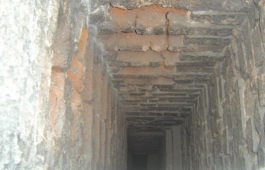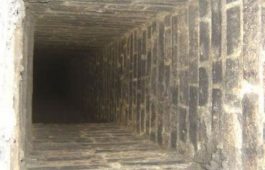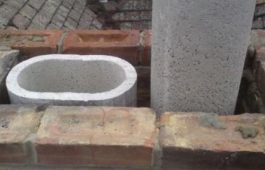Building Regulations for Thatch Properties – The basics
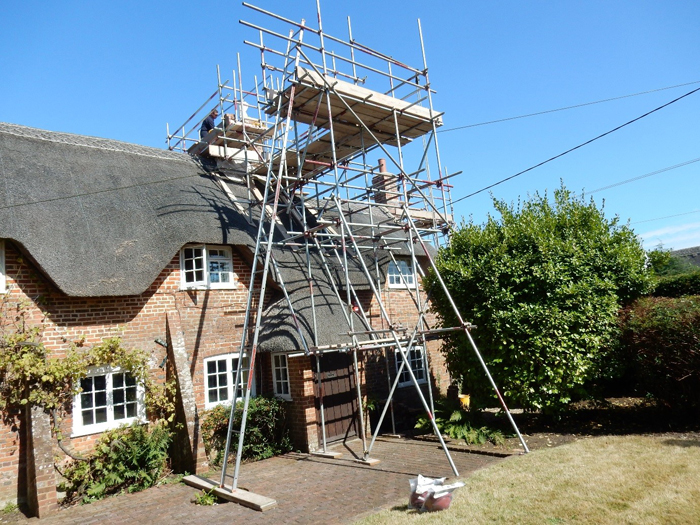 The building regulations regarding solid fuel combustion appliances within thatch properties can appear to be vast and daunting on first reading, resulting in a home owner perhaps becoming uneasy as to the quantity of works, the cost implications an installation may have and also the insurability of the property.
The building regulations regarding solid fuel combustion appliances within thatch properties can appear to be vast and daunting on first reading, resulting in a home owner perhaps becoming uneasy as to the quantity of works, the cost implications an installation may have and also the insurability of the property.
Below we have outlined the key areas that need to be considered to ensure that Building regulations are adhered to and the property is insurable.
1. Insulated Flue Shafts
Insurance companies will often state that if an appliance is to be installed that it must have an insulated flue way, but do not elaborate on the options available. An insulated flue shaft is designed to provide improved protection to the property and structure in the event of a chimney fire occurring. The high temperatures that can be reached within the flue shaft itself also need insulating to prevent heat transfer which could also lead to a fire. There are several options for lining of the flue shaft. An insulated flue way also improves the up draught of the chimney.
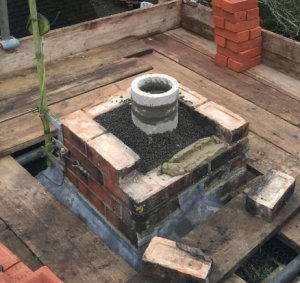 First is the Schiedel Isokern pumice flue lining system. This lining system works for both open fires and solid fuel appliances. We would strongly recommend this option for thatch properties as the insulation value, durability and life expectancy of these liners far exceed that of other systems. Further, pumice liners provide greater protection to the chimney and adjacent structures in the event of a chimney fire.
First is the Schiedel Isokern pumice flue lining system. This lining system works for both open fires and solid fuel appliances. We would strongly recommend this option for thatch properties as the insulation value, durability and life expectancy of these liners far exceed that of other systems. Further, pumice liners provide greater protection to the chimney and adjacent structures in the event of a chimney fire.
The installation itself involves accessing the flue in one or two positions throughout its height. A structural register plate is installed at a discreet height within the recess to support the pumice liners and the surrounding Leca insulation that is used to fill the void between the existing brick flue way and new pumice liners. The liners are installed throughout the chimney to the top of the chimney pot, ensuring flue temperature is maintained throughout its height, aiding in allowing the smoke and fumes to exit the chimney safely.
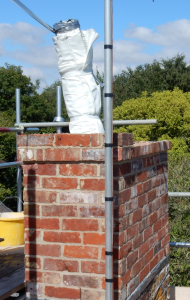 The second option is to install a stainless steel twin wall flue system. This is a system typically used when installing a solid fuel appliance. The rigid sectional liners are fixed together throughout the height of the chimney. A closure plate is installed at a discreet height within the recess but must incorporate an inspection hatch. This is to enable all joints of the twin walled flue system to be inspected throughout their height with a CCTV camera as a minimum.
The second option is to install a stainless steel twin wall flue system. This is a system typically used when installing a solid fuel appliance. The rigid sectional liners are fixed together throughout the height of the chimney. A closure plate is installed at a discreet height within the recess but must incorporate an inspection hatch. This is to enable all joints of the twin walled flue system to be inspected throughout their height with a CCTV camera as a minimum.
The last option is to install a stainless steel flexible liner, wrapped in an insulating blanket. Again, this is a system typically used when installing a solid fuel appliance but can also be used with small open fires. This option is often viewed as more favourable by the client as it is much less intrusive or disruptive to the property. It has to be noted though that a flexible liner will need replacing, typically every 15yrs depending on the use and maintenance of the flue.
2. Chimney Heights
The height of a chimney is usually the main issue with thatch properties as a large proportion of them are also listed buildings. The current building regulations state that the top of the chimney pot should achieve 1.83m above the thatch ridge. This often means extending the existing chimney in either new brickwork, installing a taller chimney pot, or a combination of the two.
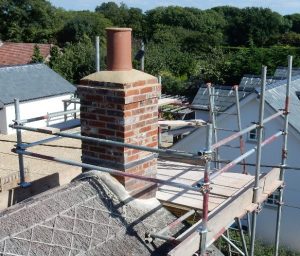 This regulation is in place to ensure that should hot embers exit the top of the chimney, it is likely they will be carried away from the thatch with the up draught, therefore reducing the risk of sparks falling onto the thatch itself increasing the risk of a fire occurring.
This regulation is in place to ensure that should hot embers exit the top of the chimney, it is likely they will be carried away from the thatch with the up draught, therefore reducing the risk of sparks falling onto the thatch itself increasing the risk of a fire occurring.
If your property is listed then listed buildings consent will be required. In some instances, permission will not be granted but with conditions or restrictions on the works that may occur. In all instances, a copy of the relevant approvals should be provided to the installers prior to any works being undertaken. Should there be restrictions or conditions on the works, it does not mean that the works cannot be undertaken. A property of Listed status can be deemed not to have to comply with certain requirements. All works will require a building notice to be submitted and ultimately, it is the local building inspector who will issue a certificate of completion. It is also advisable that you also get in writing from your relevant insurance company a letter stating that with this knowledge, they are still prepared to provide insurance cover for the property with the installation being completed to all permitted regulations.
3. Flue Sizing
Open fires vs solid fuel appliances
Most people will agree that there is nothing more aesthetically pleasing than an open fire roaring away. Typically, however, thatch properties have large inglenook fireplaces and installing the necessary flue is not always achievable.
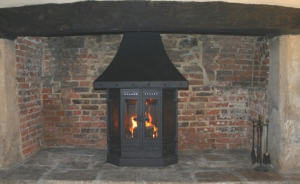 It is imperative that the flue installed is adequate to provide a sufficient area for flue draught and combustion. All solid fuel appliances will state the flue requirements and these are typically approximately a flue with an internal diameter of 150mm. This is typically installable within all existing brick flues, as a 225mm x 225mm flue (a brick by a brick) is generally the smallest dimension, unless the flue has been configured in such a way that there are restrictions. It is required that there is 200mm from the insode of the flue shaft to the external face of the brickwork as it passes through the thatch and sometimes this will require the thatch to be cut away around the chimney to provide a thermal barrier.
It is imperative that the flue installed is adequate to provide a sufficient area for flue draught and combustion. All solid fuel appliances will state the flue requirements and these are typically approximately a flue with an internal diameter of 150mm. This is typically installable within all existing brick flues, as a 225mm x 225mm flue (a brick by a brick) is generally the smallest dimension, unless the flue has been configured in such a way that there are restrictions. It is required that there is 200mm from the insode of the flue shaft to the external face of the brickwork as it passes through the thatch and sometimes this will require the thatch to be cut away around the chimney to provide a thermal barrier.
To provide an insulated flue shaft for an open fire, the flue area must be 15% of the fire opening (the width by the height), although this can be reduced depending on the flues height and configuration For example, an inglenook with dimensions of 1m by 1m could require a flue with an internal diameter of 350mm. Installing liners of these dimensions is not often achievable in thatch properties and therefore limits the choice for the client. The option is to either reduce the fire opening size to the necessary dimensions (a 200mm liner works with a fire opening of approximate dimensions 500mm by 600mm), or to consider a solid fuel appliance such as a convector firebox, which is in effect an open fire but has smaller flue requirements.
4. Other considerations to ensure that Building regulations are adhered to
If you are considering an open fire or solid fuel appliance for your thatch property, the four things we would recommend you pay particular attention to are as follows.
A – Inspection. CCTV inspections are becoming a common request from insurers to ensure a flues integrity and to satisfy their insurance requirements. If you have an open fire or appliance that has been unused for some time, or have just moved into a thatch property we would recommend a CCTV survey of the flues condition before it is used. This will provide both piece of mind for yourself as the home owner, but may also assist your insurance premiums even if it has not been specifically requested. (Please read our article on CCTV surveys). If you are considering having an installation, a CCTV survey prior to works commencing can identify exactly what has to be done, meaning a true fixed quotation with no added extras can be offered.
B – The installation. Ensure all works are undertaken by a competent person or company. Ensure they have the necessary insurances in place and can provide evidence of experience with thatch installations. Ensure all works are completed underneath a building notice.
C – Usage. As with all things, the way in which they are used affects both their productivity and their longevity. Following the manufacturers guidelines and advice from the installer on how to build and operate a fire in conjunction with using the correct fuels, will ensure a fire and flue operates at their most efficient. (Please read our articles on using correct fuels and how to operate appliances)
D – Maintenance. Having your flue swept regularly and maintaining any appliance will ensure you get the most from your fire. Both the fire and flues longevity can be enhanced beyond the product guarantees if good regular maintenance is undertaken. (Please read our article on flue maintenance).
Summary
Owning a thatch property does not prohibit you from having a large roaring open fire or a warm radiant stove. The regulations in place are there to ensure as a home owner, the best precautions have been taken to reduce the risk of a fire occurring and ensure the safety of the occupants. If installed correctly and used as instructed, a fire, in any capacity, can be a great addition to the ambience of a home.
If you have any questions or queries about building regulations you feel we have not addressed above, or want to discuss a specific installation, please email or call us and one of our team will be happy to provide you with additional advice.
